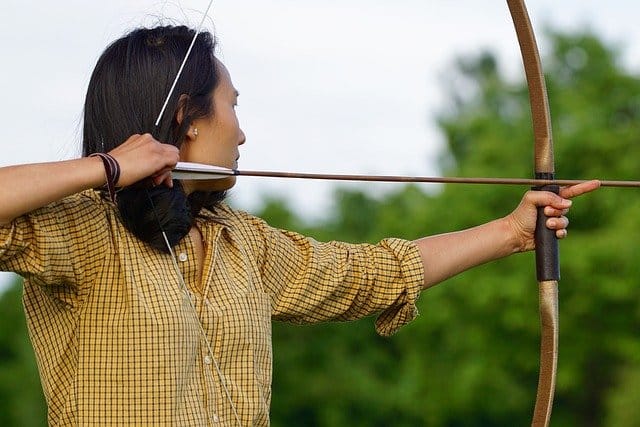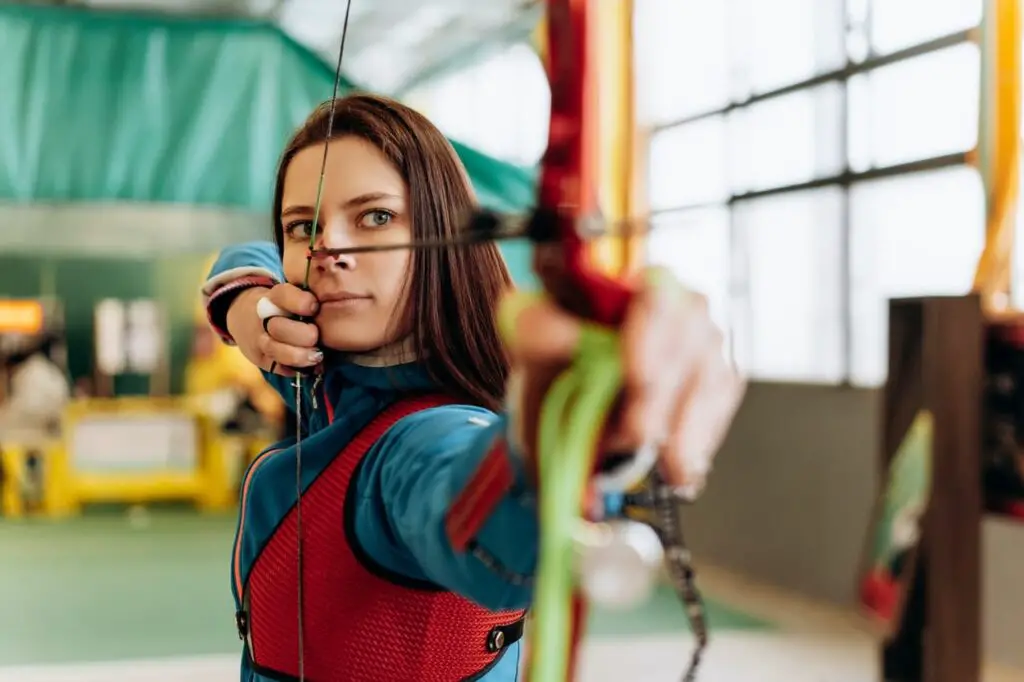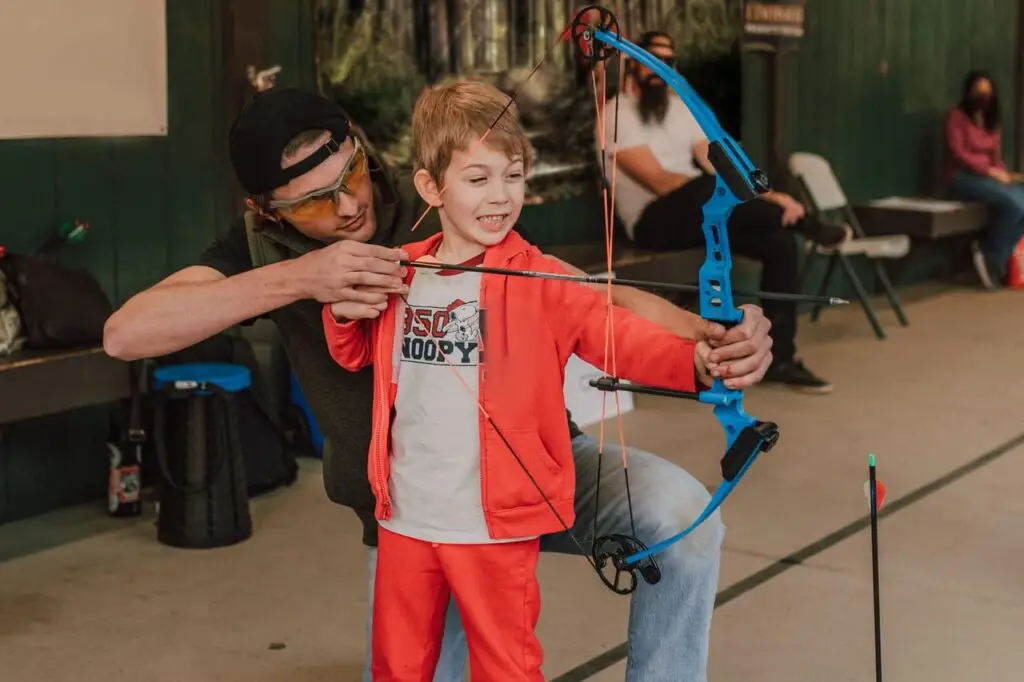Distance is one of the key factors to consider when shooting, particularly if your weapon of choice is a bow and arrow. The ability to accurately judge your distance from a target is an invaluable skill during any hunting session or archery competition, and a rangefinder can easily remove all the guesswork, allowing for an easier shot. But are these fantastic tools permitted at 3D archery shoots and competitions?
Rangefinders are prohibited at 3D archery clubs and competitions. Using them is considered a poor sport and gives the archer an unfair advantage, as archers are expected to gauge distance without the assistance of range-finding tools. The only exception is if the archer is competing in a “known” class.
This article will discuss why rangefinders aren’t usually permitted for 3D archery shoots and competitions, and the exceptions to this rule. We’ll also teach you how to improve your distance gauging skills, so you don’t need to rely so heavily on rangefinders in any archery situation.

Why Can’t Archers Use Rangefinders in 3D Archery?
Rangefinders are a tool many, if not all, archers have for their ability to quickly and accurately gauge distance, a skill that takes years to acquire using just the naked eye. While they can be helpful in training sessions, especially for beginner archers, they are unfortunately prohibited in most 3D archery tournaments and clubs.
3D competitions and clubs do not permit the use of rangefinders because archers cannot have an accurate way to range distances; they must rely solely on their archery skills and other permitted tools, such as binoculars and a single sight mark.
However, there are occasions where rangefinders are permitted in competition. 3D archery competitions can have multiple categories, but two overarching ones include “unknown” and “known” classes.
Most 3D archery competitions are “unknown” class competitions, meaning the archer is not permitted to use rangefinders to determine their distance from a target before shooting. Comparatively, “known” class competitions are one of the few exceptions where rangefinders are legally allowed, so archers can accurately determine their target’s distance. These competitions are usually better suited to hobbyists and beginners than pro-level competing archers.
Are There Other Exceptions?
Apart from “known” class competitions and the occasional 3D archery club that permits rangefinders, the only other expectations for when you can use these tools is recreational practice outside a club and during a hunt. In fact, it is highly encouraged to use a rangefinder in these instances.
Can you practice archery in a public park?
Rangefinders can be fantastic tools for beginners or anyone trying to train their eye and improve their ability to gauge distance without range-finding tools. Therefore, if you’re just practising your 3D archery shooting at home, feel free to whip out the rangefinder. There’s nothing wrong with using this tool to practice and improve to the point that you don’t need to rely on it so heavily for competitions.
We also recommend using a rangefinder when hunting, and this is for two reasons. The first reason is that any hunter knows when the time comes to take a shot, you need to be decisive, accurate, and quick. You don’t have time to sit there and second guess the distance of your shot because you’re relying on your own skills.
This seeps into our second point that using a rangefinder allows you to shoot with higher accuracy, resulting in a more humane shot and, hopefully, kill. If you refrain from using a rangefinder on a tricky shot, you risk shooting your target and causing inhumane injuries they might even escape with. Out of respect for any animal you hunt, it is always best to use a rangefinder for long-distance shots.
How to Gauge Distance Without a Rangefinder
As we mentioned previously, rangefinders are great for helping you learn how to gauge distance with the naked eye, but it isn’t the only method. Eventually, you’re going to have to learn how to practice and improve this skill without resorting to these convenient tools.
The best and most practised methods for gauging distance without a rangefinder include:
- Memorized distance
- Relative distance and size
- Arrow flight time and sound
Apart from these, the most common way people gauge distance is through instinct. Sometimes this just comes naturally, and sometimes you develop almost a sixth sense after practising shots for so long. Either way, this is always a hard pill for archers who struggle with distance gauging to swallow, so let’s explain how you can use the other methods to improve this skill for 100% accuracy on every shot.
Memorized Distance
The premise of this method is relatively simple. When faced with a target in front of you, instead of trying to directly gauge the distance between you and it, try to find a distance you can gauge with ease (for most archers, this is 10 or 20 yards).
Whatever the distance, make sure it is one you can accurately gauge in nearly any circumstance. You’ll then gauge where that distance lies between you and the target and continue to add it incrementally until you reach the target. So, if you can confidently gauge 20 yards and the target is 80 yards away, you should be able to gauge your mastered 20-yard distance four times before reaching the target.
This helps break up the distance and help it feel more manageable and less of a guess by using distances you’re confident with instead.
Relative Distance and Size
This method relies more on your surroundings and what landmarks are near the target in order to gauge its distance.
What you’ll do for this method is find something in the area you can accurately gauge the distance of, be it a tree or a rock or a puddle. You’ll then try to gauge the target’s distance in relation to this landmark.
Another way people like to go about this method is to compare a target in the wild, perhaps a deer you’re hunting, to the 3D target you practice on at home. If an archer practices with a specific model enough at varying distances, they get a better feel for what certain distances look like and can then use the relative size of the model for the target they’re trying to gauge the distance of in real-time.
Arrow Flight Time and Sound
Another common method amongst archers is using an arrow’s flight time and even sound to gauge distance. This method can be tricky because it relies on your ability to shoot more than one arrow, making it difficult to use when hunting or in competitions where you only get one shot. That being said, it can be highly effective in situations when multiple shots are flying.
The basis of this method is for the archer to be able to gauge distance based on how long it takes their arrow to fly from release to target. Sometimes, the instinct of distance gauging doesn’t always come with what you see right in front of you, but the feel of how long it takes your arrow to reach the target. Alternatively, some archers learn how to gauge distance based on the sound their arrow makes when it flies rather than its flight time.
If this resonates with you, you can use this method by either firing a shot and gauging the arrow’s flight time or assessing the sound it makes and then adjusting, or you can watch your fellow archers take a shot and gauge their arrow’s flight time or sound.
If you struggle with gauging distance but enjoy archery competitions, you can watch an opponent shoot and use this method here instead of waiting for your first shot to gauge distance.
Final Thoughts
Rangefinders might not be permitted in most 3D archery competitions or clubs, but that doesn’t mean you can’t use these tools to benefit your 3D archery skills. If you genuinely enjoy competing with a rangefinder, try competing in a “known” class competition where they’re allowed. Otherwise, we recommend using this tool solely for hunting and practice. In the meantime, try some of the methods we listed above to train your naked eye or even ears to help you gauge distance more accurately without range-finding tools.
Sources:
https://www.deerassociation.com/3d-archery-will-make-better-bowhunter/
https://forums.bowsite.com/tf/bgforums/thread.cfm?threadid=432174&forum=36
https://www.mossyoak.com/our-obsession/blogs/how-to/a-guide-to-3d-archery-tournaments


